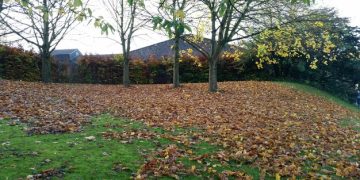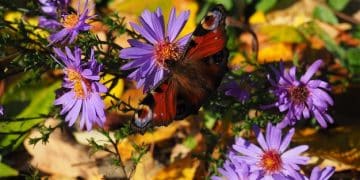Is Your Lawn Ready for Winter? November Overseeding & Fertilizing Guide
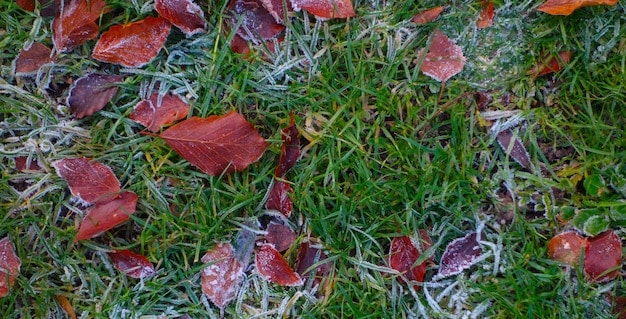
Ensuring your lawn thrives through winter involves key steps like overseeding with cool-season grasses and applying a winterizing fertilizer in November, preparing it for dormancy and a lush spring revival.
Is your lawn looking tired as autumn progresses? Preparing your lawn for the colder months is crucial for its survival and ensuring a vibrant comeback in the spring. This November, take proactive steps to protect your green space with strategic **Is Your Lawn Ready for Winter? A November Guide to Overseeding and Fertilizing** to fortify it against the challenges of winter.
Why November is Key for Lawn Winterization
November is a pivotal month for lawn care in many regions of the US. As temperatures drop and growth slows, it’s the ideal time to perform tasks that will protect your lawn during dormancy and promote new growth when spring arrives. These tasks include overseeding and fertilizing, each playing a crucial role.
Understanding the specific benefits of November lawn care will help you make informed decisions and avoid common pitfalls. Let’s explore why this month is so critical for a healthy, resilient lawn.
The Importance of Cool-Season Grasses
Cool-season grasses, such as Kentucky bluegrass, perennial ryegrass, and fescues, thrive in cooler temperatures and are well-suited for many parts of the United States. These grasses enter a period of dormancy during the winter, but their roots remain alive, allowing them to regrow quickly in the spring.
- Optimal Growing Conditions: Cool-season grasses actively grow in the fall and spring when temperatures are between 60°F and 75°F.
- Dormancy Benefits: Winter dormancy protects the grass from harsh conditions, conserving energy for spring growth.
- Regional Suitability: These grasses are commonly used in the northern and transitional climate zones of the US.
Benefits of Overseeding in November
Overseeding involves spreading grass seed over an existing lawn to fill in bare patches, thicken the turf, and improve overall lawn density. Doing this in November offers several advantages, especially for cool-season grasses.
Overseeding can help keep your grass lusher and fuller than ever, but it is important to understand the basics of overseeding to ensure you don’t do more damage than good to your lawn.
- Repairing Bare Spots: Overseeding helps fill in areas damaged by summer heat, drought, or heavy foot traffic.
- Increasing Density: A thicker lawn is more resistant to weeds, pests, and diseases.
- Improving Color and Texture: Introducing new grass varieties can enhance the lawn’s appearance.
November’s cooler temperatures and increased moisture create optimal conditions for seed germination and establishment, ensuring a stronger, healthier lawn in the spring.
Essential Steps for Successful Overseeding
Overseeding can revitalize your lawn, but it requires careful preparation and execution. Following these steps will maximize your chances of success.
While it might seem like a one-time and then done type of project, it is a process that is going to require frequent trimming and watering. Let’s dive into the best practices of overseeding.
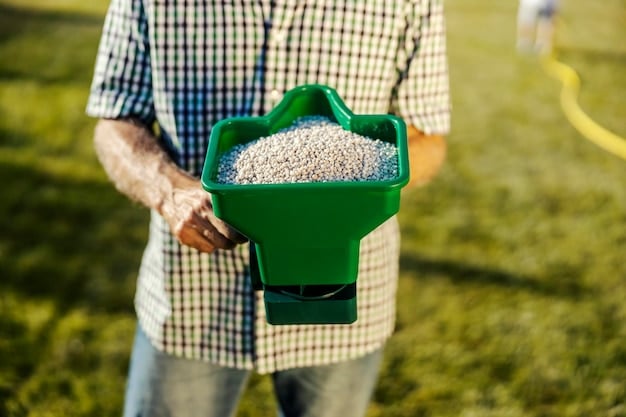
Preparing the Lawn for Overseeding
Proper preparation is crucial for ensuring good seed-to-soil contact and successful germination. Start by mowing the lawn to a low height (around 1-2 inches) and removing any debris, such as leaves or dead grass.
- Mowing: Cutting the grass short allows the new seeds to reach the soil surface more easily.
- Raking: Raking removes thatch (a layer of dead organic matter) and loosens the soil, improving seed-to-soil contact.
- Aerating: Aerating the lawn creates small holes in the soil, improving air and water penetration, which is especially beneficial for compacted soils.
Selecting the Right Grass Seed
Choosing the right grass seed is essential for a healthy, thriving lawn. Consider your climate, soil type, and the amount of sunlight your lawn receives.
There are so many different types of grass seed, so understanding what type your lawn has is key!
- Kentucky Bluegrass: Known for its lush, dark green color and excellent cold tolerance.
- Perennial Ryegrass: Germinates quickly and provides good wear resistance.
- Fine Fescues: Tolerant of shade and drought, making them suitable for challenging areas.
Ensure the seed is of high quality and appropriate for your specific lawn conditions to achieve the best results.
These steps ensure that the new grass seeds have the best possible environment to germinate and establish themselves, leading to a thicker, healthier lawn.
The Role of Fertilizing in Winter Lawn Care
Fertilizing in November is another critical step in preparing your lawn for winter. A well-timed fertilizer application can provide the nutrients your grass needs to survive the cold months and thrive in the spring.
But, when should you fertilize? What kind of fertilizer should you use? We are going to answer all of your questions!
Understanding Winterizing Fertilizers
Winterizing fertilizers are specifically formulated to provide a slow-release of nutrients that promote root growth and cold hardiness. These fertilizers typically have a higher potassium (K) content, which helps strengthen the grass’s cell walls and improve its ability to withstand winter stress.
The N-P-K amount on any fertilizer is going to show you how much of each compound is in the mix in that order. It’s important that the K levels are the highest as this will promote the best root growth.
- Nutrient Composition: Look for fertilizers with a high potassium (K) content to enhance cold hardiness.
- Slow-Release Formula: Slow-release fertilizers provide a steady supply of nutrients over an extended period.
- Application Rate: Follow the manufacturer’s instructions for the correct application rate to avoid over-fertilizing.
Benefits of November Fertilizing
Fertilizing in November provides several key benefits for your lawn. It helps the grass build strong roots, store energy reserves, and improve its overall resilience to winter conditions.
Keeping your lawn happy is key, but knowing when to do certain items is even more important!
- Root Development: Potassium promotes strong root growth, which is essential for nutrient uptake and drought tolerance.
- Energy Storage: Fertilizing helps the grass store carbohydrates, providing energy for spring regrowth.
- Disease Resistance: A healthy, well-nourished lawn is less susceptible to winter diseases like snow mold.
Applying the right fertilizer at the right time ensures your lawn has the nutrients it needs to survive the winter and emerge strong and healthy in the spring.
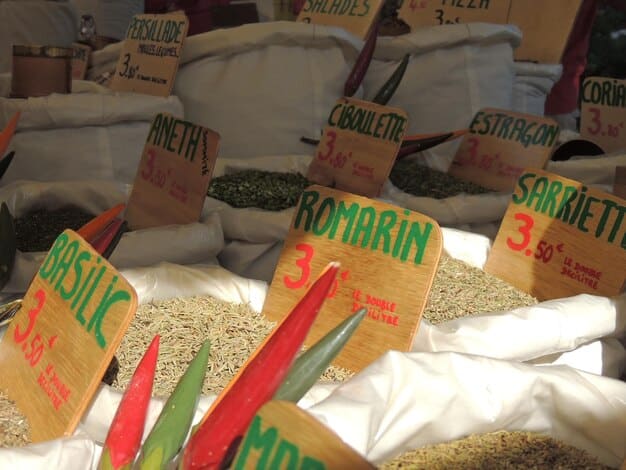
How to Choose the Right Fertilizer
Selecting the appropriate fertilizer is crucial for maximizing the benefits of winter lawn care. Consider your lawn’s specific needs and the fertilizer’s nutrient composition.
There are typically big differences in fertilizer type to help with different grasses. Understanding what you’re working with is step one. Step two is understanding what fertilizer can do for your lawn.
Reading Fertilizer Labels
Understanding fertilizer labels is essential for making informed decisions. Look for the N-P-K ratio, which indicates the percentage of nitrogen (N), phosphorus (P), and potassium (K) in the fertilizer. For winterizing, choose a fertilizer with a higher K value.
- N-P-K Ratio: The N-P-K ratio indicates the percentage of nitrogen, phosphorus, and potassium in the fertilizer.
- Slow-Release Nitrogen: Look for fertilizers with slow-release nitrogen to provide a steady supply of nutrients.
- Additional Nutrients: Some fertilizers may contain micronutrients like iron, which can improve the lawn’s color and health.
Types of Fertilizers to Consider
There are various types of fertilizers available, each with its own advantages and disadvantages. Consider both granular and liquid options to see what best fits your needs!
There are also organic options that can be useful if you’re trying to be more eco friendly. However, the fertilizer makeup between organic and non-organic is going to be different and not always as effective.
- Granular Fertilizers: Easy to apply and provide a slow-release of nutrients.
- Liquid Fertilizers: Offer quick nutrient absorption and are ideal for addressing immediate deficiencies.
- Organic Fertilizers: Derived from natural sources and provide a gradual release of nutrients.
- Identify your lawn’s specific needs.
- Read fertilizer labels carefully.
- Choose a fertilizer that aligns with your lawn’s requirements and your preferences.
Best Practices for November Lawn Care
To ensure your lawn is well-prepared for winter, follow these best practices for overseeding and fertilizing in November. Consistent care will result in a healthier, more resilient lawn.
Not all lawn treatments are the same, and most lawns will need different types of attention. This is based on the location, soil, type of grass and more!
Timing Your Applications
Timing is crucial when it comes to overseeding and fertilizing. The ideal time to overseed and fertilize in November is when the soil temperature is consistently below 65°F but before the ground freezes.
- Soil Temperature: Monitor the soil temperature using a soil thermometer.
- Weather Forecast: Avoid overseeding or fertilizing before heavy rain to prevent runoff.
- Grass Growth: Ensure the grass has enough time to establish before winter dormancy sets in.
Proper Watering Techniques
Watering is essential for seed germination and nutrient absorption. After overseeding and fertilizing, keep the soil consistently moist but not waterlogged.
There is a fine line between enough water and too much water, and both can cause damage if not monitored properly.
- Frequency: Water lightly and frequently (several times a day) for the first two weeks after overseeding.
- Depth: Water deeply and less frequently once the grass seedlings emerge.
- Timing: Water early in the morning to allow the grass blades to dry before nightfall, reducing the risk of fungal diseases.
These best practices will help ensure your lawn receives the care it needs to thrive, even during the challenging winter months.
Troubleshooting Common Issues
Even with the best preparation and care, lawn care challenges can arise. Here are some common issues you might encounter and how to address them.
Lawns rarely grow perfectly, there is always some type of issue that arises. Preparing for these issues ahead of time can help you to be prepared to resolve the issue as quickly as possible.
Preventing Weed Growth
Weeds can compete with new grass seedlings for nutrients and sunlight. To prevent weed growth, consider applying a pre-emergent herbicide before overseeding.
- Pre-Emergent Herbicides: Apply a pre-emergent herbicide to prevent weed seeds from germinating.
- Hand-Pulling Weeds: Remove any existing weeds by hand to prevent them from spreading.
- Maintaining a Healthy Lawn: A thick, healthy lawn is naturally more resistant to weeds.
Dealing with Pests and Diseases
Pests and diseases can damage your lawn, especially during the transition to winter dormancy. Monitor your lawn regularly and take action if you notice any signs of infestation or disease.
- Pest Control: Use insecticidal soap or neem oil to control common lawn pests like grubs and aphids.
- Disease Prevention: Apply a fungicide to prevent fungal diseases like snow mold and brown patch.
- Proper Lawn Care: Maintain proper mowing height, watering practices, and fertilization to promote a healthy, disease-resistant lawn.
Addressing these common issues promptly can help keep your lawn healthy and vibrant throughout the winter months and into the spring.
| Key Point | Brief Description |
|---|---|
| 🌱 Overseeding | Fill bare spots and thicken your lawn using cool-season grasses in November. |
| 🍂 Fertilizing | Apply winterizing fertilizer with high potassium to strengthen roots and improve cold hardiness. |
| 🌡️ Timing | Overseed and fertilize when soil temperature is below 65°F but before the ground freezes. |
| 💧 Watering | Water lightly and frequently after overseeding, then deeply and less frequently once seedlings emerge. |
Frequently Asked Questions
▼
The best time to overseed is when the soil temperature is consistently below 65°F but before the first frost. This usually falls in early to mid-November in many regions.
▼
Cool-season grasses like Kentucky bluegrass, perennial ryegrass, and fine fescues are ideal for overseeding in November. Choose a blend that suits your local climate and soil type.
▼
For the first two weeks, water lightly and frequently (2-3 times a day) to keep the soil consistently moist. Once the grass seedlings emerge, reduce watering to once a day, deeply.
▼
Winterizing fertilizer helps strengthen the grass’s root system, store energy reserves, and improve its ability to withstand cold temperatures, ensuring a healthier lawn in the spring.
▼
Wait until the new grass seedlings are about 3 inches tall before mowing. Set your mower blade to a high setting to avoid cutting the new grass too short, which can stress it.
Conclusion
Preparing your lawn for winter in November is a crucial step towards ensuring a healthy, vibrant green space come springtime. By following these guidelines for overseeding and fertilizing, you’ll give your lawn the best possible chance to thrive through the cold months and flourish when warmer weather returns.
